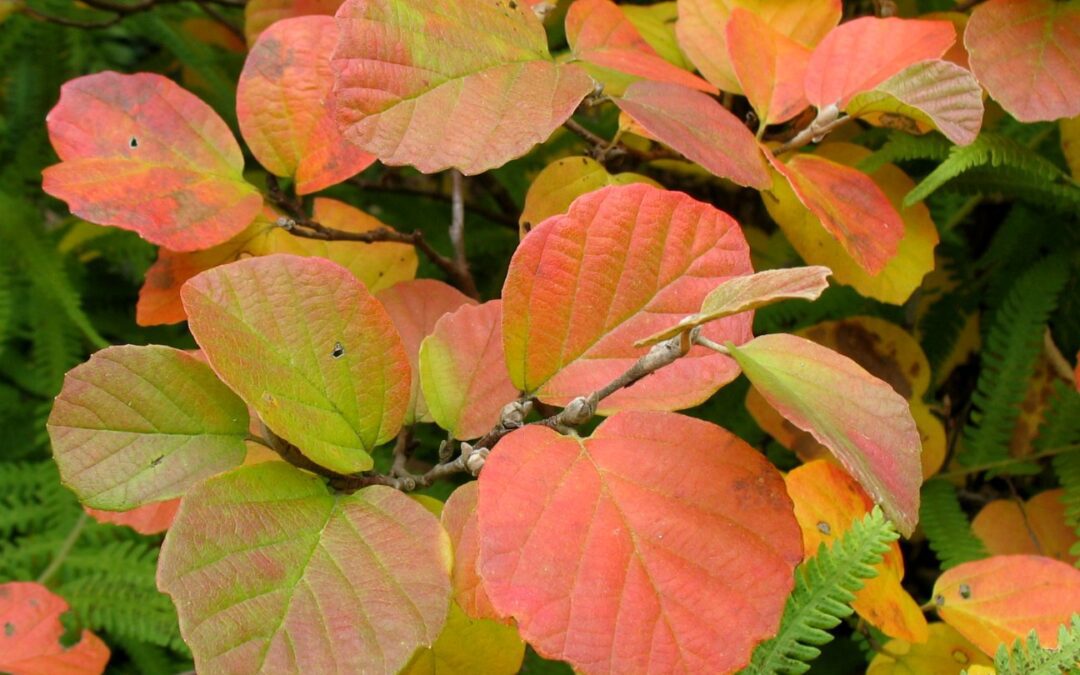As summer wanes and autumn approaches, birds congregate in the trees and on overhead wires. The air is sweetly scented with ripening fruit. The light changes, becoming more golden. Everything seems ready to burst. Not in the tender, life-is-beginning way of spring, but in a more poignant manner that hints life in the garden will soon fade.
When summer is dishing out heat and humidity, and winter brings us face to face with another polar vortex, we remember rich palette of autumn. Fall color typically peaks mid-October in southern Wisconsin, but many of us are too busy to do much traveling. The solution? Plant as many trees, shrubs and perennials that have autumn interest as possible. Then sit back and enjoy the season’s paint box in your own backyard.
Let’s begin with the most obvious sign of fall, the changing colors of foliage. If you have room for a large shrub, the Serviceberry cloaks itself in the most spectacular shades of clear orange. As added bonuses, the white flowers in early spring and blue summer fruit make it a plant with year-round interest. ‘Autumn Brilliance’ is a favorite small tree, but ‘Regent’ is a great choice if you only have space for a smaller shrub.
A shrub that packs a powerful punch of fall color is the Witch-alder, or Fothergilla. They are quite adaptable plants that naturalize beautifully. The dwarf species sports grey-green foliage that offers a cool foil to your summer blooming perennials, but as the temperatures drop, it warms right up with a dazzling display of gold, orange and scarlet.
And good fall interest isn’t limited to woody plants. Plenty of perennials can put on an eye-catching show. For excellent foliage color, it’s hard to beat the Cranesbill Geraninums. Many of these easy-care perennials can adapt to light conditions from full sun to part shade, with lovely summer flowers in pink and blue. Once the flowers fade, Geraniums will dress themselves in shades of scarlet and burgundy. I have ‘Rozanne’ planted along the driveway apron and it snickers at the piled-up snow and comes back strong. Every spring, without fail.
A native perennial to consider is Little Bluestem. This grass’s clumping habit makes it a great companion plant in any mixed border, and the flowers are an important food source for small butterflies. In the late summer, the ripening seed heads will attract migrating birds. The foliage of this beauty adds a soft contrast to the strong hues of summer. But watch it in the late summer as it changes to tones of copper, burgundy and smoky purple. I know a road in Kohler lined with drifts of Little Bluestem and Russian Sage. Magnificent!
And speaking of food for wildlife, you have to consider the Chokeberries. Members of the genus Aronia have fabulous fall color, but the fruit display is amazing. The tips of the branches are covered in bright red or deep blue-black berries, depending on the variety. Most birds won’t touch the fruit until they’ve experienced several hard freezes. The cold softens the berries and sweetens the taste. Before that, Chokeberry really lives up to its name!
If you are up for a day trip, Travel Wisconsin has developed an excellent resource for finding the best fall color in state areas. Local observers report and predict the color in all 72 counties, so you may not need to go far for inspiration. Check out https://www.travelwisconsin.com/fall-color-report. So do your garden, and your soul, a favor and this year and plan for fall leaves before the leaves fall.

